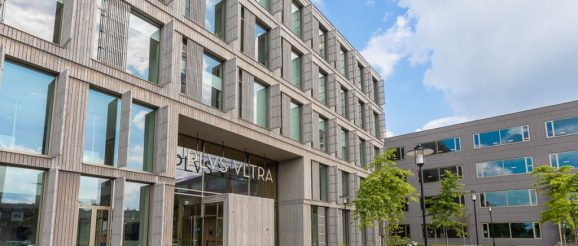Open Ecosystems Promote Knowledge Sharing and Scientific Innovation

Human societies today are based around knowledge economies, where knowledge is currency and where quick, innovative solutions for problems are in high demand. We explore why innovation ecosystems that nurture varied skill sets, collaborative environments, and diverse perspectives are earning a reputation as centers for accelerating innovative solutions.
Knowledge economies are systems that capitalize on scientific discoveries and applied research. As civilization progresses, we edge closer to building and thriving in such economies. Today, knowledge is harnessed into product innovation, with the goal of solving societal problems and building sustainable growth opportunities.
The 21st century shift towards open innovation
Within the scientific world, knowledge sharing and collective problem-solving can lead to quick development of optimal solutions. However, almost counter-intuitively, the academic ideal of ‘publish or perish’ has led to strict guarding of intellectual property and a natural resistance to sharing one’s best ideas with others.
Until very recently, innovating purely within the constraints of one’s own organization was regarded as the norm. However, the push from economic globalization and technological change, accompanied by the realization that relying only on internal resources and limited perspectives can dampen or even stifle innovation, has changed attitudes.

And out of this increasing openness, innovation ecosystems were born. Innovation ecosystems comprise an interconnected network of organizations and entities that develop capabilities and use a shared set of services, knowledge, and skills to innovate.
Related Content
Similar to the workings of its ecological counterpart, proximity stimulates interactions within an innovation ecosystem. Out of this, successful collaborations can arise between different sectors, encouraging the sharing of perspectives, which leads to accelerated innovation.
Within the life science sector, science parks built on the innovation ecosystem concept have seen a rise in popularity. Straeter explained that this can be credited to the stimulating environment they provide for professionals, such as scientists and entrepreneurs, while also creating job opportunities.
Critical success factors that stimulate innovation
“To have a successful innovation ecosystem, it is important to have good representation and interaction of three types of organizations in a science park, commonly referred to as the triple helix,” Straeter elaborated.
“This includes businesses, which act as the commercial and operational centers; knowledge and research institutions like universities, which are the source of new knowledge and technology; and network organizations or government bodies overseeing stable connections in the collaborations that arise.”
Crucial components in setting up an innovation ecosystem also include access to new talent and knowledge, funds (via private or public funders), an international network, corporate as well as recreational facilities, and the provision of well-designed and flexible accommodation.
Another critical success factor, Straeter shared, is tailoring the ecosystem management approach to the requirements of the innovation ecosystem itself. “As ecosystem managers supporting 24 science parks and 40 plus properties across Europe over the last two decades, we have learnt that it is vital to be aware of the needs of our tenants. Apart from coming to us for help in setting up their offices, labs, or facilities in multi-tenant buildings, our tenants want a direct channel to public and private investors.”
Related Content
“They also want access to a range of services including incubator programs, legal and marketing aid, property and intellectual property management, and recruitment. With our ecosystem services, we have adopted a proactive approach in meeting such needs.”
The end goal is to build an ecosystem that fosters planned and unplanned meetings, stimulating collaboration and innovation. Therefore, opportunities for networking are key.
Sharing how this critical factor is ensured in the innovation science parks that Kadans helps to manage, Straeter said, “We have in place ecosystem tools to encourage in-person networking such as get-togethers over informal drinks, business events, expert sessions, and symposiums.”
“We also encourage virtual connections through our online platform, webinars, live streamed table discussions, and podcast series that we host. These tools ensure that each of our tenants can leverage any service provided in our innovation science parks to their fullest capacity.”
Success stories: how open innovation empowers collaborations
Success stories from science parks supported by Kadans showcase the promise that innovation ecosystems hold.
Sharing one such recent example, Straeter said, “The Novio Tech campus in the Dutch city of Nijmegen has developed into a health and high technology cluster with close ties to the local community. It accommodates our tenant Enzyre, a successful innovative diagnostic company.”
“As Enzyre was building a platform-based sensor that aids patient testing and treatment optimization, they were on the lookout for small-scale production support. Located within Enzyre’s vicinity was CITC, a non-profit innovation center with the right tools to operationalize this.”
What started as a meeting over coffee at the science park went on to become a successful partnership between Enzyre and CITC, which resulted in building proof-of-concept prototypes that demonstrate Enzyre’s technology.
Another example of a successful venture based at the same science park is that of Protinhi Therapeutics, a preclinical stage biotech company with a focus on developing antiviral medicines for infectious diseases.
“We are proud to have been able to support a venture like Protinhi, who have strategically leveraged inter- and cross-campus collaborations, on their mission to meet the high unmet clinical need for diseases like dengue, Zika, West Nile fever and recently even Covid-19,” stated Straeter.
Similarly, in the Wageningen Campus — located within the grounds of the Wageningen University & Research (WUR) in the Netherlands — Kadans has helped in operating an agri-food research and production hub.
And two successful ventures call this campus home: Yili, Asia’s rapidly-growing dairy company, and an agri-foodtech accelerator StartLife, who entered into a partnership in 2021. This collaboration is a win-win situation not just because of the geographical proximity of the two ventures, but also the common goals that the ventures share, said Straeter.
This partnership is a means for Yili to tap into StartLife’s entrepreneurial resources to brainstorm over and solve issues that the agri-foodtech industry needs to tackle in the future. In-turn, Yili, with its strong experience in Asian countries, enables innovative healthy food start-ups with access to opportunities in these emerging markets.
A knowledge-intensive and innovative future
The successful innovation emerging from the science parks that Kadans helps operate is proof that innovation ecosystems can accomplish what they set out to do. However, the community-building journey in these ventures is a cyclical process, with plenty of room to grow.
“We are constantly building on the approach to optimize the innovation ecosystem for our tenants at the many science parks that we operate in,” concluded Straeter. “As we acquire and shape more ecosystems across Europe, we will continue to work with our strategic partners at regional, national, and international levels to connect organizations and form strong knowledge-sharing communities.”
To learn how you can partner with Kadans Science Partner and leverage the innovation ecosystem on offer to ensure your success, please visit the company’s website.
Tune in here to listen to the podcast series ‘Building the Future’ where partners in Kadans’ network share more on the innovative solutions they are building for the problems they hope to tackle.
Images courtesy of Kadans Science Partner.
